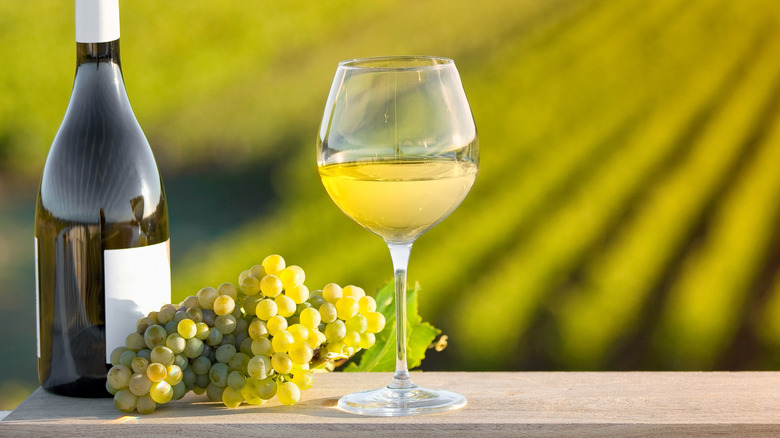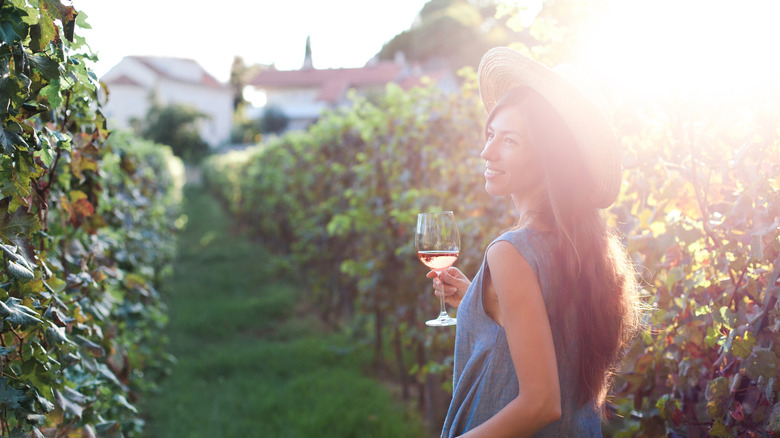Vineyards Vs. Wineries: What's The Big Difference And Why You Need To Know
There's an easy way to remember what a vineyard is. Obviously, it's comprised of two different, straightforward words: "vine" and "yard." Literally, this is a patch of land where the grapevines grow. There's no size limit for vineyards. They could consist of a single row of vines, or they could sprawl across acres and acres. Cultivating grapes is called viticulture, and this is where the winemaking process fundamentally begins. If you're looking for, say, budget-friendly wine destinations in the U.S., these places are mostly famous for their grape-growing environment, or "terroir."
But what about wineries? Many people use "vineyard" and "winery" interchangeably, as if they occupy the same space and serve the same purpose. Unless you know a great deal about the craft of winemaking, this is an easy mistake to make. Maps of winemaking regions like Burgundy in France or Sonoma Valley in California are thick with both vineyards and wineries, and a novice might assume they're just fancy names for the same concept. The nomenclature gets more complicated as you incorporate more languages. In French, a vineyard is a "vignoble," while it's "viñedo" in Spanish and "weinberg" in German. In contrast, a winery is a "établissement vinicole," a "lagar," or a "weingut," and there are other translations for each word as well.
If you want to easily remember what happens at a winery, think of similar-sounding words like "factory" or "creamery." This is where the wine is actually made. The grapes are crushed, fermented, clarified, and aged. In short, vineyards and wineries can exist on the same property –– and thousands do –– but grapes can also be grown in one location and shipped to a winery, anywhere in the world.
Key differences between vineyards and wineries
Why does this matter? Well, in most cases, travelers want to prioritize visiting a winery — and not a vineyard. Unless you're obsessed with agriculture and want to watch the grapes getting harvested, you probably want to taste the actual wine that results. Wineries have the machinery and aging barrels, and most have tasting rooms. You may also encounter shops, restaurants, and organized tours. These amenities make a visit accessible and fun, and they're the reason certain U.S. cities are best for wine tastings. In theory, the vineyard could be located anywhere, owned by a completely different company.
That said, many winemakers prefer to grow their grapes nearby, and there's a long tradition of vineyards and wineries sharing the same estate. If a winemaker has the right land already, there's every reason to grow vines right next to the winery. After all, it saves on transport, keeps the fruit fresh, and reduces potential supply-chain issues. Plus, when people visit the tasting room, they can step onto the porch and gaze upon all those rows of grapevines and see exactly where this glass of pinot came from. Wineries and vineyards may be different spaces, and they don't have to overlap, but it's a wonderful thing when they do. For example, this top-rated, mountainside winery (and vineyard) features some of the best views in Napa Valley.

